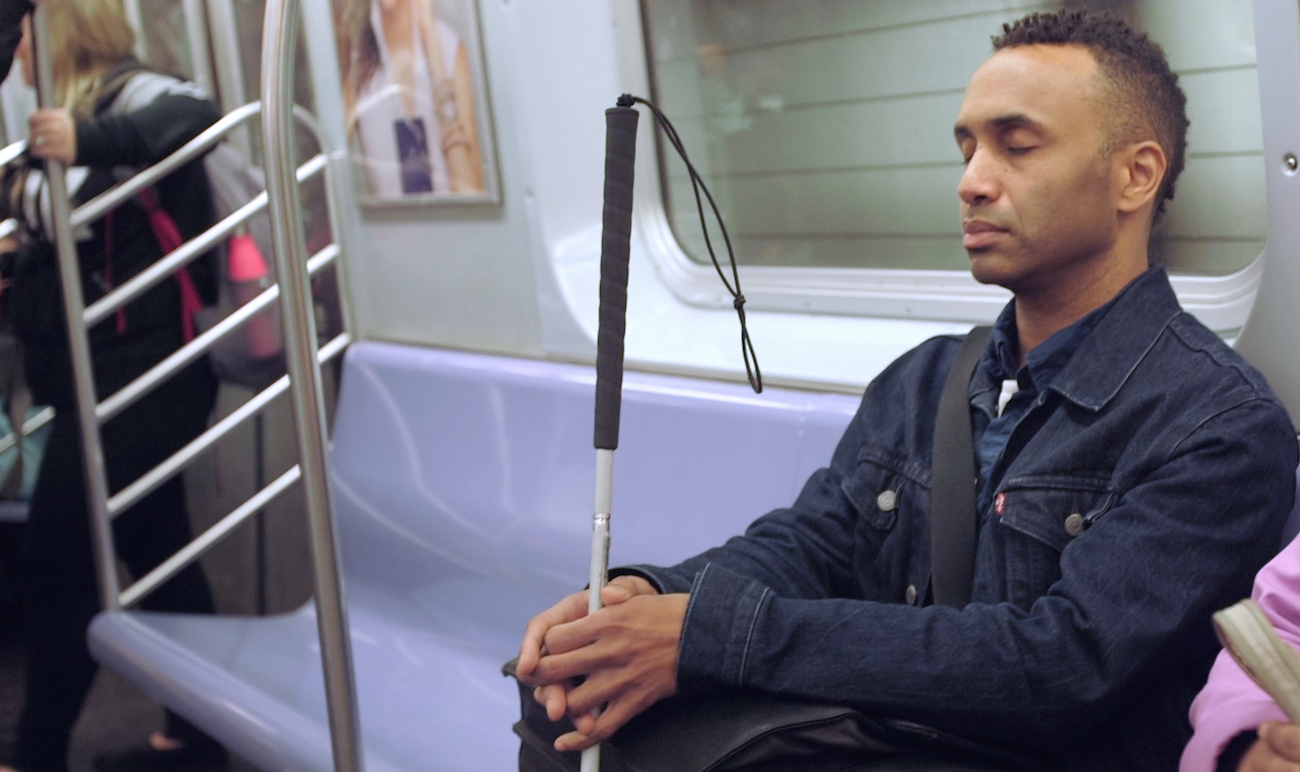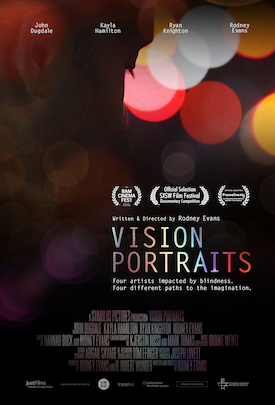 Vision Portraits is a deeply personal documentary by award-winning filmmaker Rodney Evans (Brother to Brother) as he explores how his loss of vision may impact his creative future, and what it means to be a blind or visually impaired creative artist. It’s a celebration of the possibilities of art created by a Manhattan photographer (John Dugdale), a Bronx-based dancer (Kayla Hamilton), a Canadian writer (Ryan Knighton), and the filmmaker himself, each of whom experience varying degrees of visual impairment. Using archival material along with new illuminating interviews and observational footage of the artists at work, Evans has created a tantalizing meditation on blindness and creativity, a sensual work that opens our minds to new possibilities.
Vision Portraits is a deeply personal documentary by award-winning filmmaker Rodney Evans (Brother to Brother) as he explores how his loss of vision may impact his creative future, and what it means to be a blind or visually impaired creative artist. It’s a celebration of the possibilities of art created by a Manhattan photographer (John Dugdale), a Bronx-based dancer (Kayla Hamilton), a Canadian writer (Ryan Knighton), and the filmmaker himself, each of whom experience varying degrees of visual impairment. Using archival material along with new illuminating interviews and observational footage of the artists at work, Evans has created a tantalizing meditation on blindness and creativity, a sensual work that opens our minds to new possibilities.
I sat down with Rodney Evans to discuss this remarkable documentary, which has been winning awards at film festivals all over the country including the Outstanding Documentary Award from the 2019 Frameline San Francisco LGBTQ Film Festival and a Special Award for Artistic Achievement from Outfest Los Angeles.
Danny Miller: This is such a moving film, it was fascinating to watch you and these three incredible artists at work. Let’s get one big cliché out of the way — what do you think about the idea that when one sense is impaired in some way, the other senses become way more attuned?
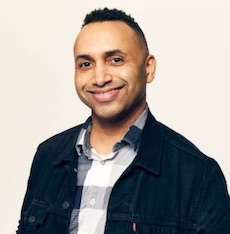
Rodney Evans
Rodney Evans: I mean, I do think that’s true to a certain degree. I think my hearing is much more acute due to my visual impairments and I think being visually impaired often leads artists to want to explore their other senses. You see it with all the artists profiled in the film.
Even as I ask that question, though, I worry that it partly stems from my own subconscious desire to hear people in your position to say that losing some of your vision was a “gift.” Do you feel that some people watch a film like this needing to find a way to make it all “okay?”
Yes, I do think some people are looking for what I would call “inspiration porn!” I’m very aware of the parameters of that genre and I worked hard to not fall into it.
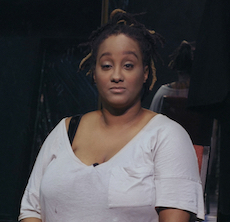
Kayla Hamilton
I think the way you avoid that is to show multidimensional characters and all shades of gray — let’s celebrate the triumphs but let’s also see some of the devastating episodes that occur when someone loses their vision and has to navigate the New York City subway system via muscle memory. Believe me, there are experiences that people with visual impairments go through that can be very difficult. I think I’m very real about that in the film but I also wanted to show how such experiences can become a catalyst for making art. Look at Kayla Hamilton in the film. She’s a very multidimensional character and a brilliant artist and she wasn’t afraid of taking about how she contemplated taking her own life at one point. But then she went on to use that experience to make a very powerful singular piece of work.
I love her dance piece so much, I’d love to see the whole thing. How did you choose the artists to profile in the film, was it about wanting to represent different art forms and show people with different creative responses to their visual impairment?
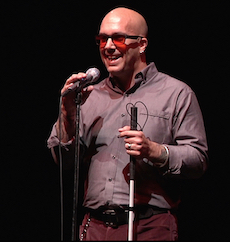
Ryan Knighton
I think it was a combination of those things. In the case of Ryan Knighton, I was already friends with him. He wrote this very powerful memoir called Cockeyed that just blew me away. We first met after he adapted it into a screenplay and was looking for a director. We ended up sharing our work with each other and we stayed in touch. So when I thought of making this film, he was probably the first person I reached out to. And I was very interested in his experience because he has the same condition that I have, retinitis pigmentosa.
What first put the idea in your head of making a documentary about artists dealing with vision loss?
It had been brewing for a long time. Around the end of 2014, I started to think about what I’d do if my vision continued to deteriorate. I had noticed some deterioration between my first and second features and my fears were looming about how I’d continue to make films if things got much worse. I think my M.O. as an artist is to always move towards things that scare the crap out of me, frankly. I didn’t want to keep it hidden so I just decided to address it and try to conquer the fear. I started looking for other artists creating work in that situation, I wanted to know what their artistic practice was like. In addition to Ryan, I had a friend who knew John Dugdale. I had always loved John’s photographs — I thought they were really beautiful.
His photographs are amazing, and he seems like such a fascinating guy.
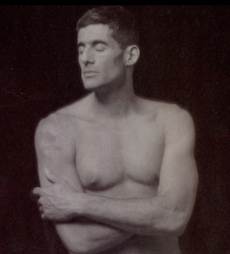
John Dugdale
He is. And I know it was very painful for him to have to go back through all of those memories of being in St. Vincent’s at the height of the AIDS epidemic. He was there for a year and a half and lost his vision as a result. John had a series of AIDS-related strokes, and as he says in the film, a lot of times when you had AIDS, vision loss was one of the last symptoms. But John lost his vision early on. St. Vincent’s was the epicenter of the AIDS epidemic at that time, so many people were dying all around him. That period obviously had a huge impact on his work.
Did making this film help you feel less fear about your condition as you hoped it would?
Yes, I definitely feel less fear now and I feel less shame. I just feel free and empowered.
Were you actively trying to hide your vision loss before you made this documentary?
I felt very hidden within the film industry and I was even told by certain producers that I should never say that I was visually impaired in a pitch meeting. Better no one should know.
Oy, not exactly a prescription for getting rid of any internal shame you were feeling. That anecdote you tell in the film about needing a cane and your mother getting you a walking cane instead of one for visually impaired people was so poignant. Did you find a lot of similarities to when you came out as gay?
Oh yes, there were many parallels.
Like, “I love and support you, but please don’t make a spectacle of yourself, no one needs to know!”
Exactly. I mean, I do understand where my mother was coming from. Parents want the best for their kids and they don’t want their kids to have to come up against homophobia or ableism of this world. They know that’s going to make their children’s lives harder and they don’t want them to have a hard life. That’s why my parents moved from Jamaica to the U.S. so that I would have better opportunities. So on that level, I understand the protective parental instinct: “Holy shit, you’re black, you’re gay, and now have this disability? Your life is going to be so fucking hard! Why does everyone need to know?” I get it, but it just doesn’t work.
You sound like you have a lot of compassion for your parents.
I understood the culture that they come from which is not LGBT friendly and had different attitudes about people with disabilities. There’s this universal immigrant fantasy that my parents subscribed to. Come to this country, be successful, keep up with the Joneses, build your successful business, put your kids through college, and have them be as successful as possible. And while doing that, they should try to blend in and assimilate as much as they can and never do anything that might prevent them from getting the highest paying job.
It would be great if all family members of people with vision loss could see this documentary.
I do hear from parents who are very appreciative. But I mostly hear from low vision adults who are very grateful to see themselves reflected on screen for the first time. Some of them come up after screenings and hug me for a long time. They are so grateful for the authentic representation of what their lives are like. Some people told me they’d been waiting their whole life for this movie, that it fills a hunger they’ve had to feel seen and to feel whole and that their experience is valid and valuable.
I’m sure this film is giving people dealing with vision loss a lot of hope.
When you first receive such a diagnosis, many people think it means that their life is over and that they are doomed to a very sheltered existence with a caretaker. I think the film debunks this stereotype because it shows these fiercely independent artists out in the world making very powerful work. I’m thrilled to be able to turn this experience into something that’s healing and transformative both for me and for audiences.

